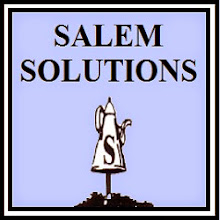DRESS FOR INTERVIEW SUCCESS
By:
Laura Sinberg
What you wear speaks volumes to prospective
employers.
Remember
that Tide-to-Go commercial, the one where an interview candidate tries
to explain why he's the best choice for the job. But the interviewer is so
distracted by a stain on the man's shirt that he imagines the stain talking to
him? The message is obvious: One tiny detail can have a big impact when it
comes to getting the job. And what you wear has a lot to do with it.
Although
job-related skills an experience rank high in importance in whether or not you
land the position, during the initial hiring process they have less power than
most of us think. That's because the first thing we notice about someone is
their appearance, and more specifically, the way they are dressed.
According
to a study by Frank Bernieri, Ph.D., an associate professor of psychology at
Oregon State University, within the first 10 seconds of meeting your
interviewer--otherwise known as the meet-and-greet--that person has decided
whether or not you're right for the job. Those who come across as polished and
pulled together are quite simply more likely to be hired than those who are
seen as putting in less effort.
According
to Bernieri, dressing the wrong way is equivalent to the worst social faux pas:
"like picking your nose during an interview." And with last month's
unemployment rate for women age 20 and older at 7.9%--the latest data available
from the U.S. Bureau of Labor Statistics--the competition alone should provide
impetus to ace your interview.
Dressing
101
When
it comes to dressing for an interview, the consensus is that conservative is
best. "Dressing conservatively means you care on a couple of different
dimensions," notes Bernieri. "One, you're making an effort; two,
you're making an effort not to offend; three you're polite and
respectful."
The
most common mistake among candidates is not paying attention to the details,
says Kim Zoller, founder and president of Image Dynamics, which advises
companies like Moet Hennessy Louis Vuitton on image and communication skills. Ill-fitting
or too-tight clothes and casual ensembles make you look lazy or sloppy.
"If you're not dressed well, you can say all the right things ... but you
won't get the job when you're being compared with a lot of other capable people
who are dressed better," explains Zoller.
Zoller,
who used to work at a staffing agency, started her business because "I saw
women coming in to this agency, and they had great résumés, but they weren't
getting jobs because they didn't know how to dress."
She
noted clients who would go to interviews showing cleavage--a huge no-no--or
wearing see-through garments. One woman wore fishnet stockings. "It's
those silly details that get in the way [of getting the job]," she says.
When
you're thinking about what to wear, Zoller advises choosing an outfit that is
customary to your industry and taking it up a notch. For conservative
businesses, for example, you should wear a matching skirt or pantsuit with
pantyhose--carry an extra pair on hand in case they run--and closed-toe shoes.
In an Internet or public relations firm, consider dressing a little trendier:
sling-back heels, a button-down shirt and a pair of slacks.
No
matter the industry, however, sexy should always be avoided. "If you are
wearing a blouse, absolutely no cleavage, and if there is any gap between the
buttons, put on a shell underneath," Zoller advises.
Multiple
accessories and bright colors should be reserved for an evening out with
friends. The idea is to give the interviewer the impression that you are
already part of their company.
That's
not to say you have to break the bank to ace the interview. Stores like Ann
Taylor Loft and T.J. Maxx offer ensembles at reasonable prices. "I walked into
T.J. Maxx the other day and they had a beautiful Theory suit for a quarter of
the [retail] price," notes Zoller.
The
Reasoning Behind the Rules
Proper
attire for an interview will create a halo effect, meaning your interviewer
will see you in a positive light and forgive any minor gaffes you may make.
The
phenomenon was first studied in the early 1900s by psychologist E.L. Thorndike,
who noticed that when an individual is found to possess one desirable trait,
that individual is assumed to have many other desirable traits too. "We
would like to think that we'd make decisions based on rational evidence,"
says Bernieri. "The truth is, it's about how well they dress."
In
fact, says Zoller, other factors that affect hiring, such as being prepared for
the interview, researching the company and following up after the meeting, are
all trumped by appearance. "Dressing is something you can control, and
people realize that."
And
you're sabotaging yourself if you choose to go against the grain. Employers
have every right to discriminate against those who are dressed in a less
professional manner, says James McDonald Jr., a partner at the Irvine, Calif.,
offices of labor and employment law firm Fisher & Phillips. "An
employer would be justified in refusing to hire an [individual] who it deemed
inappropriately dressed for work," he explains.
"Although
it may not seem fair, it isn't worth it to dress differently if you have a goal
in mind," says Zoller. "It takes time to make up for a bad first
impression, and in an interview you don't have that opportunity because it goes
by so quickly."

No comments:
Post a Comment